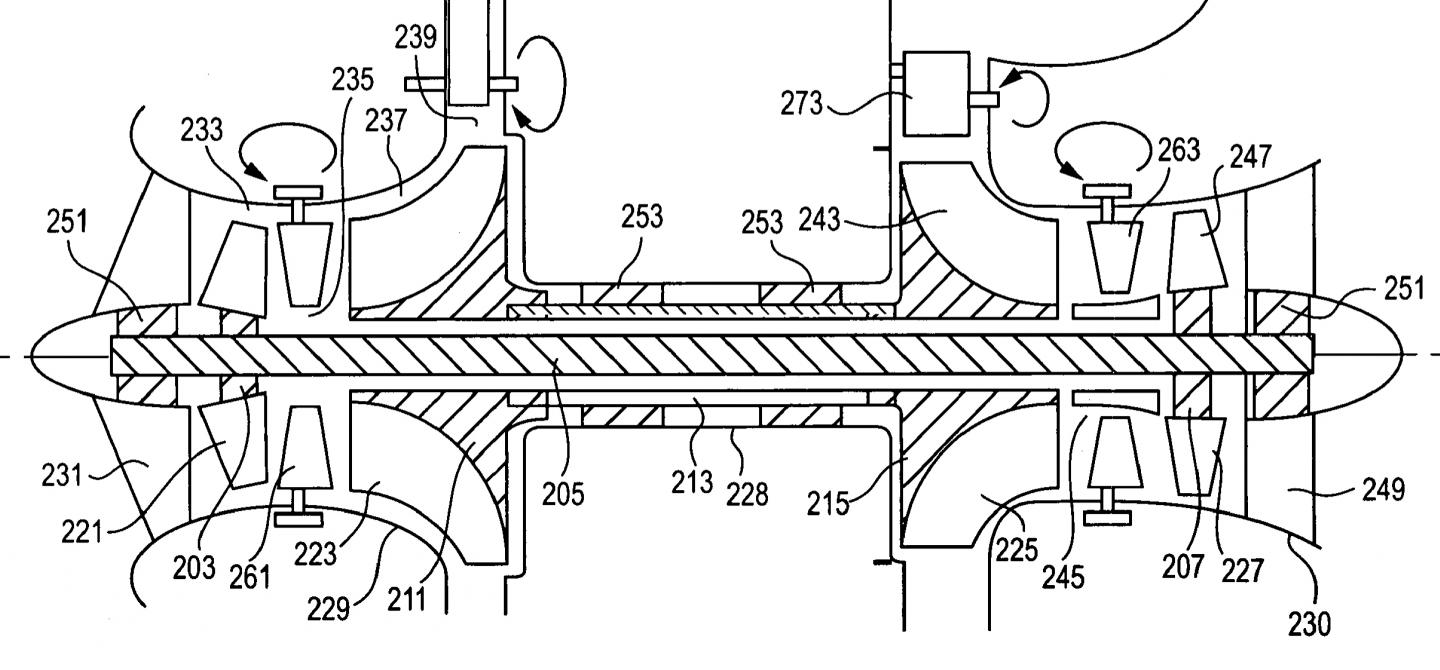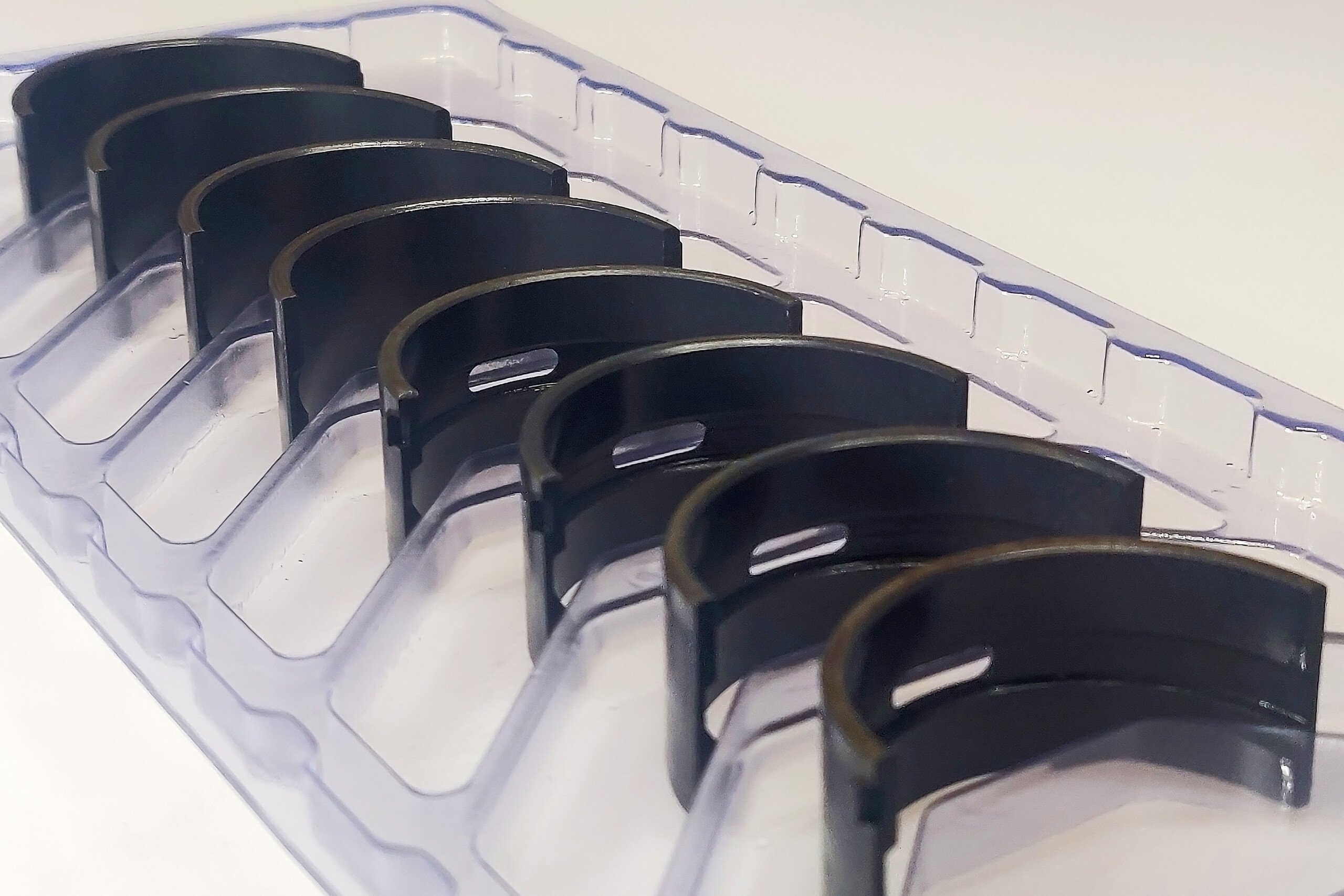Here at EngineLabs, we’ve covered turbocharging in various forms quite a bit. Single- and twin-turbo systems are probably the most common, but we’ve also covered sequential turbocharging, compound turbocharging, and even setups containing three or more turbochargers in various configurations.
Turbocharger sizing is a complex issue, and with a single turbocharger system, there are often times compromises made to favor one area of performance over another. All of those turbocharger configurations involving more than one turbocharger are looking to increase the performance range and efficiency of a single-turbocharger application, at the tradeoff of weight, packaging size, and engineering complexity.
We recently came across a video by Jason Fenske of Engineering Explained, showing off a new (or new-to-us, anyway) turbocharger technology which might be able to take all the packaging and simplicity-of-plumbing benefits of a single turbocharger, and combine it with the broadened efficiency band of a sequential multiple-turbo setup – the two-shaft turbocharger.
Hopefully, you’re familiar with the basic operation of a traditional turbocharger, because if not, you are probably going to be lost in the following paragraphs. In a traditional turbo, an radial compressor wheel is driven by exhaust flow through an radial-flow turbine wheel, which both cohabitate on a single driveshaft.
The two-shaft turbo design being discussed here doesn’t divorce the compressor wheel from the turbine wheel, but rather adds a second compressor and turbine – of the axial variety – to the single turbocharger unit, on a second shaft, independent of the traditional radial compressors, essentially providing two stages of independent compression in a single turbocharger unit.
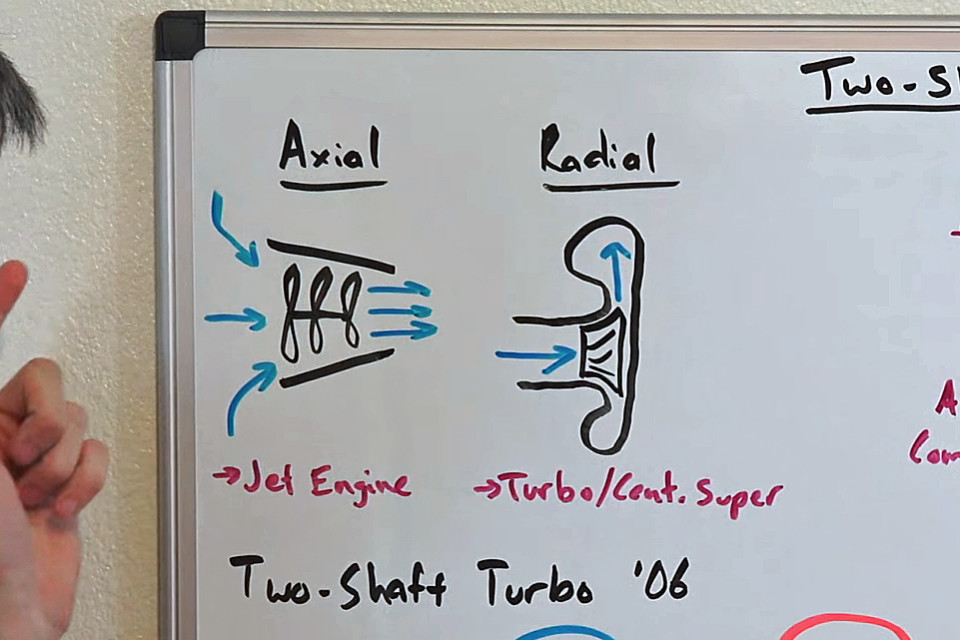
Traditionally, turbochargers only use radial compressor wheels. While there are axial compressors in industrial applications, and the axial design is a key part of jet engines, the axial-type compressor isn’t found as an automotive power-adder.
What’s Old Is New Again
As Fenske points out in his video, this idea isn’t anything radically new, as he was able to find a Society of Automotive Engineering paper from 1990 on the precursor to this new design, called an “Axial-Radial Turbocharger,” (which can be found here).
In the design, which has been around since at least 1990, “[the axial-radial turbocharger’s] goal was to increase a turbocharger’s pressure ratio in a compact form,” Fenske explains. The pressure ratio referenced, in its simplest form, is the compressor discharge pressure, divided by intake pressure (typically atmospheric in a single-turbo application).
“The axial-radial turbocharger design was actually fairly simple. A standard exhaust turbine and shaft dives what is essentially a compound compressor,” says Fenske. “On the intake side, there is both a traditional radial compressor wheel, along with an axial compressor wheel on the same shaft in front of the traditional compressor wheel.”
Functioning along the same lines as a compound turbocharging setup, but on a smaller scale and in a single unit, the axial-radial turbochargers showed promising results in the paper Fenske found. “The SAE paper said they could achieve a 1.25:1 pressure ratio before the radial compressor,” explains Fenske.
“As a result, they were seeing a 20-30-percent increase in overall pressure ratio with the same mass flow through the exhaust.” Translated to plain English, the axial compressor wheel moved more air at the same turbine speeds.
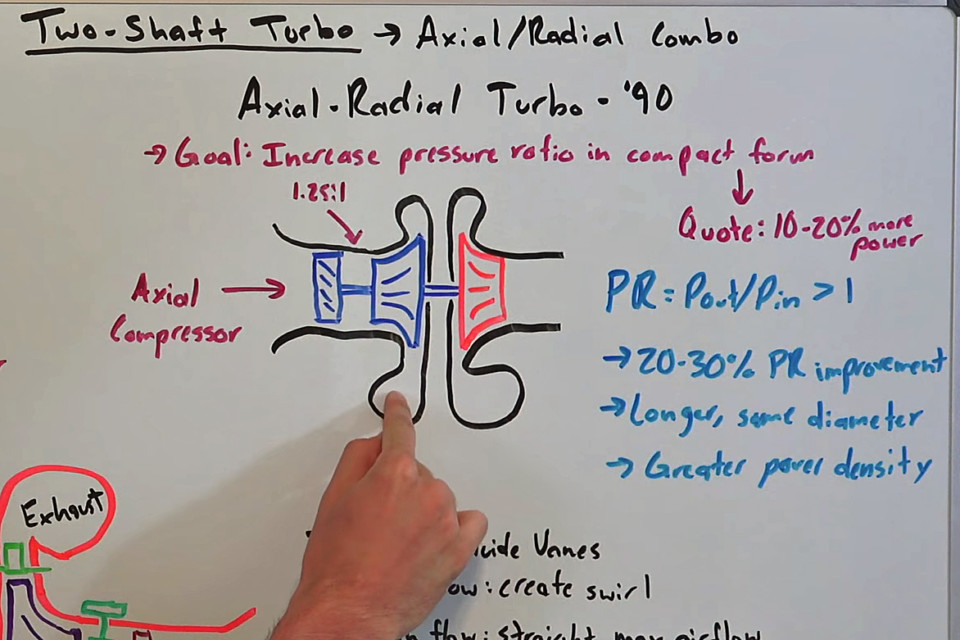
The 1990 SAE paper Fenske found discusses an “Axial-Radial” turbocharger, which adds an axial compressor wheel in front of the standard radial compressor wheel, with both compressors being driven off of a single exhaust turbine.
Two Shafts Are Better Than One
Spurred by the 1990 paper, Fenske continued his internet sleuthing for single turbochargers with multiple compressors and stumbled upon a patent owned by Honeywell – the parent Garrett Turbochargers – for something called a “Two-Shaft Turbocharger” (which can be found here).
“As the name suggests, the unit has two separate shafts. One shaft has an axial compressor driven by an axial turbine on one dedicated shaft,” explains Fenske. “Then you have the radial compressor on another dedicated shaft, driven by a traditional turbine wheel.”
In addition to two compressors in a single housing, there are a number of variable vane designs incorporated into the turbo. “[The patent design] has variable vanes on both the intake and exhaust sides between the two compressors, and then variable vanes like you’d find on a more traditional variable geometry turbocharger,” says Fenske. (For those unfamiliar with variable geometry turbocharger technology, you can check out this video)
“These new variable guide vanes between compressors can change how the air flows from the outlet of the axial compressor to the inlet of the radial compressor wheel,” Fenske says. “At low airflow, the idea is that you can impart a swirl to the air, and help out the axial compressor, improving the efficiency of the low-airflow performance. Then in high-airflow situations, you can straighten out the vanes, and allow for maxmum airflow through the system.”
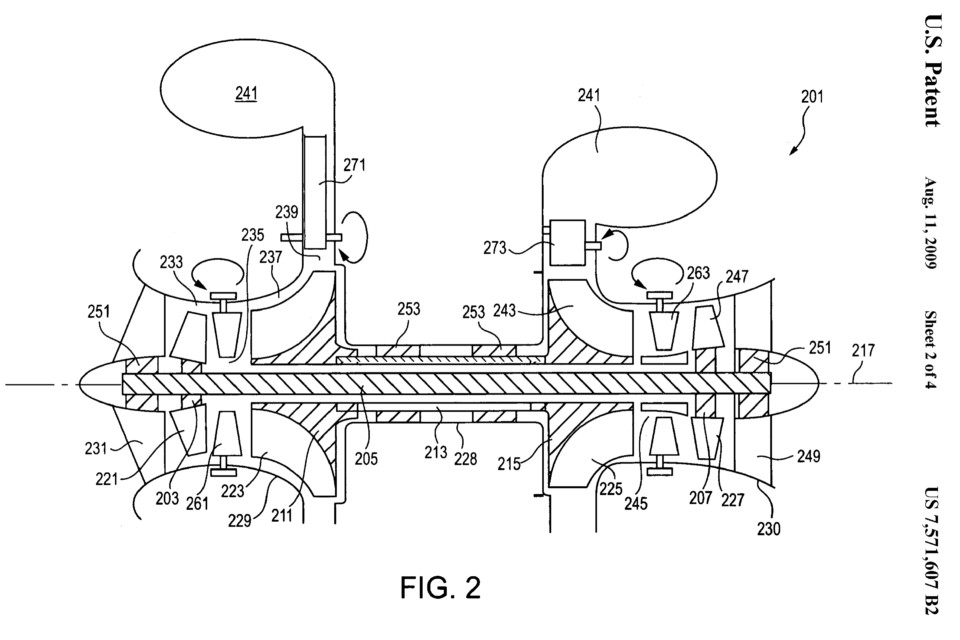
Here’s the cross-section of a two-shaft turbcharger from the actual patent documents. As you can see, there are two separate compressor systems on two individual coaxial shafts, coupled with variable geometry vanes both in the volute and between compressor stages.
All of these advancements are apparently aimed at achieving the efficiencies of a sequential turbocharging system with the packaging and costs typically associated with a single-turbocharger system, according to the patent documents. “You are basically increasing the unit’s flow range over a standard turbocharger. There is a wider range at which the turbo can produce meaningful boost,” explains Fenske.
So while the patent documents are 12 years old at this point, we aren’t privy to the goings on behind the closed doors of Honeywell’s R&D division, so we would be speaking out of school to say whether or not we will ever see the design in modern automobiles. However, Fenske sums it up perfectly, saying, “I don’t know of any cars or engines that are currently using this technology, but it’s pretty fascinating to think about.”


